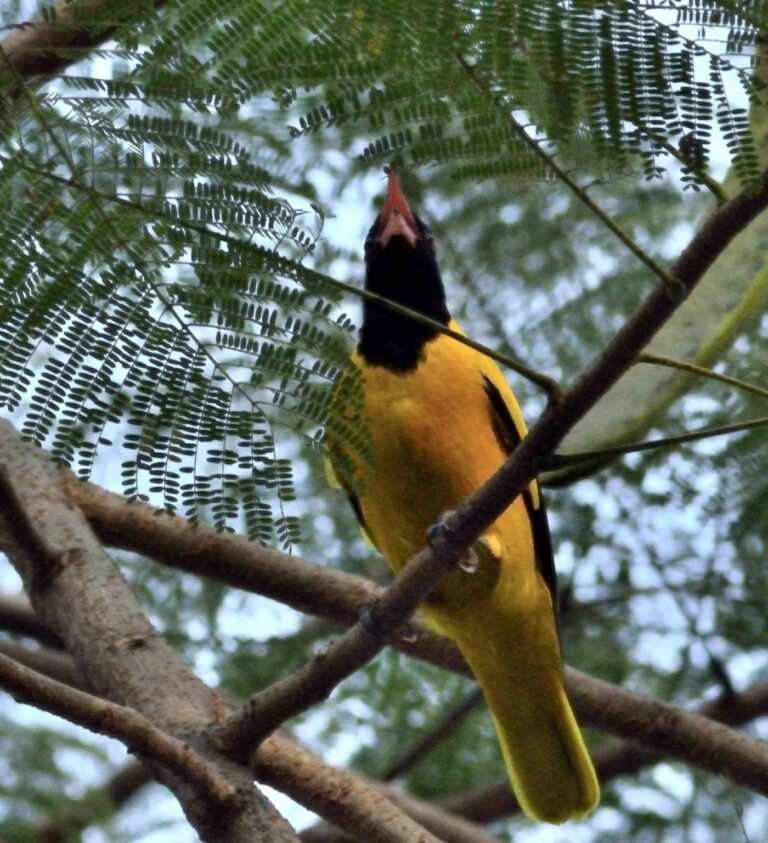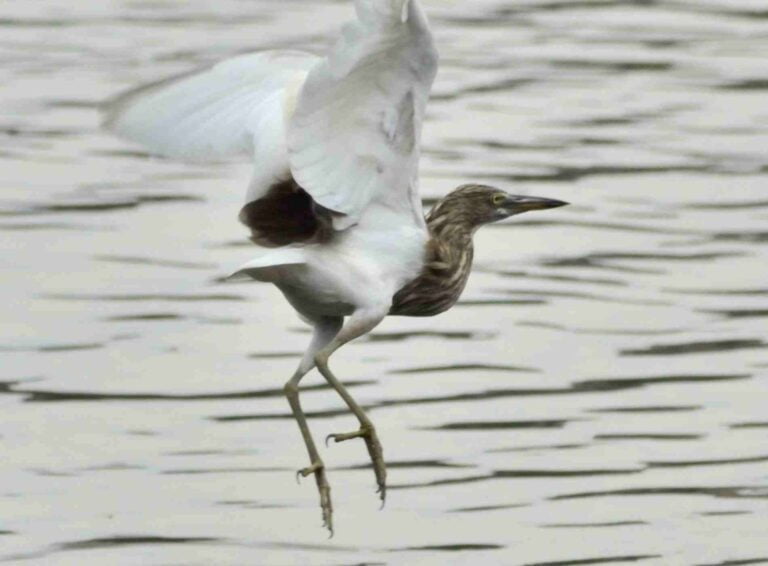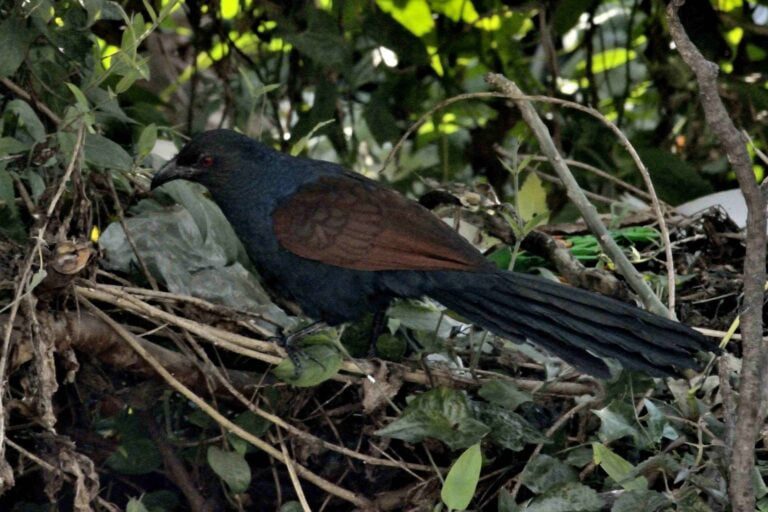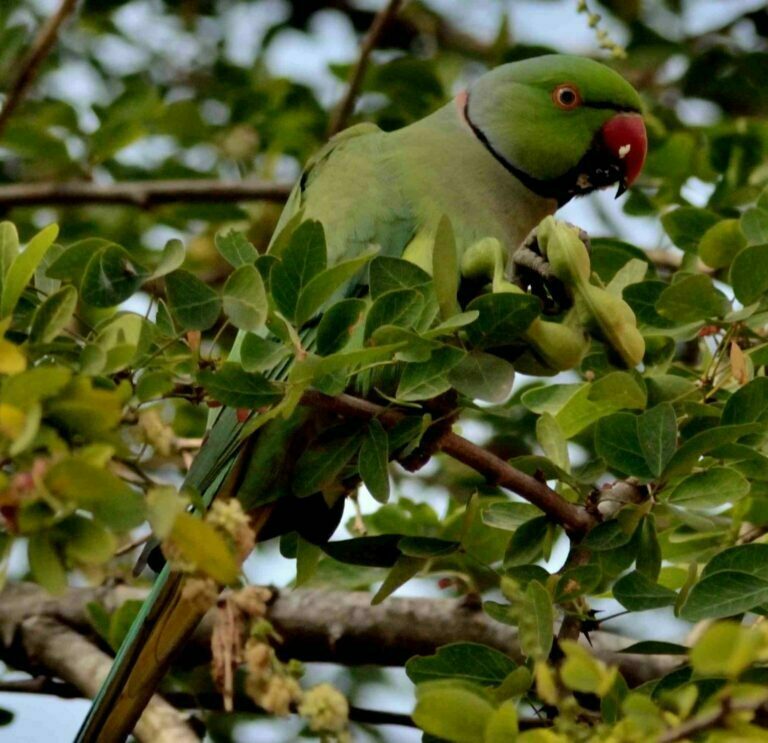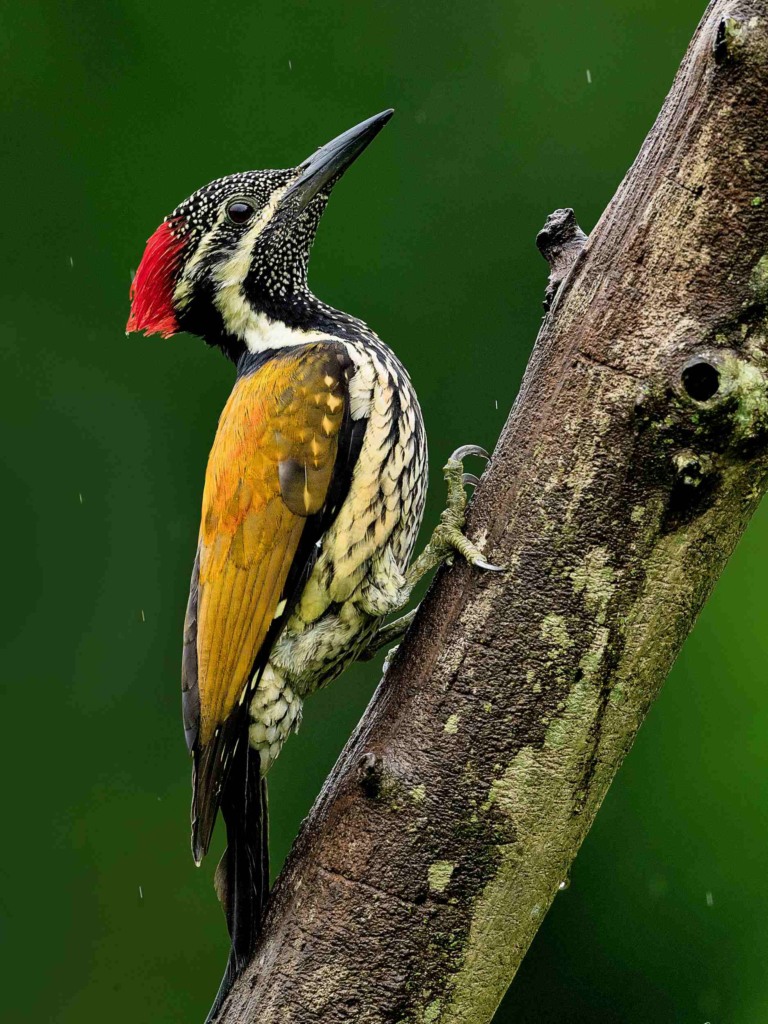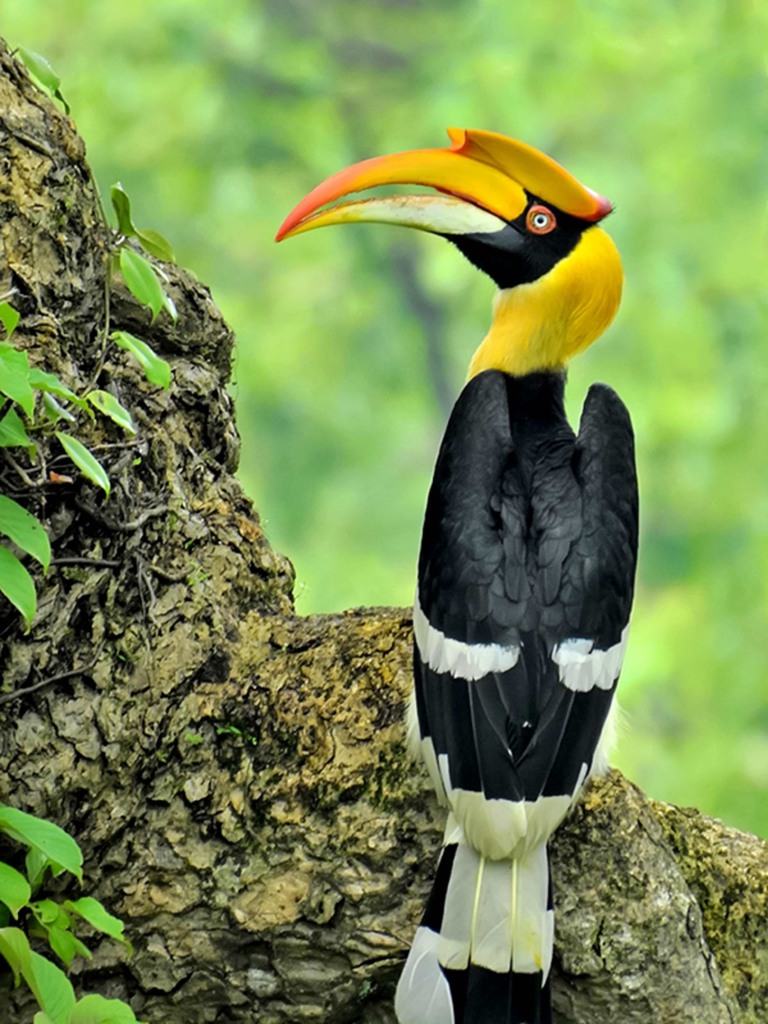The red-wattled lapwing (Vanellus indicus) is a distinctive bird species belonging to the lapwing family, Charadriidae. It is found across a wide geographic range, including South Asia, Southeast Asia, and parts of the Middle East. Here’s an overview of this fascinating bird:
Description and Characteristics
1. Size and Plumage: Red-wattled lapwings are medium-sized birds, measuring around 28 to 33 centimeters (11 to 13 inches) in length. This bird has a striking appearance. It features a combination of black, white, and brown plumage. The head, neck, and breast are black, and there’s a prominent white patch on its belly. The wings are brown with white wingbars.
2. Distinctive Features: The base of its bill is adorned with bright red fleshy wattles, also known as fleshy lobes. The bright red wattles, or cheek pouches, in front of each of these birds’ eyes have become iconic. Their red bills have black tips. Legs that are long, slender, and yellow carry their bodies.
3. Coloration: Their wings and back are light brown with a purple to green sheen, while their head, neck, and breast are black. A white patch runs between the black and brown areas, extending from the belly to the tail and flanking the neck.
- 4. Eyes: The red-wattled lapwing has bright red eyes that contrast vividly with its plumage.
- 5. Legs: Its legs are long and slender, allowing it to stride easily through its habitat.
Habitat and Distribution
6. Habitat: Red-wattled lapwings exhibit a remarkable ability to thrive in diverse ecological settings, encompassing a wide range of habitats. These habitats may include:
7. Social Behavior: These birds are typically spotted in pairs or small groups near the edges of wetlands such as marshes, paddy fields, ponds, and lakes. They may form larger gatherings during the non-breeding season. They are known to adapt to human-altered environments, including parks and gardens in urban settings.
8. Nesting: The lapwings construct shallow depressions on the ground in order to create nests for their eggs. Typically, a clutch of three to four eggs is laid, which are adeptly camouflaged. Adult individuals in close proximity to the nesting site exhibit defensive behaviors, such as vocalizations and aerial demonstrations, in order to discourage potential dangers.
9. Feeding Habits: The red-wattled lapwings are predominantly carnivorous, subsisting on a diet consisting of insects, worms, and various other small invertebrates. These organisms have evolved to be well-suited for traversing shallow bodies of water in order to search for sustenance.
10. Vocalizations: Red-wattled lapwings are distinguished by their vociferous and distinctive vocalizations, frequently characterized as “did-he-do-it.” The vocalizations of these organisms are particularly conspicuous during their reproductive period, fulfilling the function of alerting and detecting the presence of human or animal activities.
11. Distribution: Red-wattled lapwings exhibit a wide distribution encompassing diverse geographical regions, namely South Asia (India, Sri Lanka, Bangladesh, Pakistan), Southeast Asia, and certain areas within the Middle East. These organisms demonstrate the ability to acclimate to diverse ecological environments, including grasslands, wetlands, and urban landscapes.
Breeding and Nesting
12. Courtship Displays: Courtship behavior encompasses the phenomenon of males engaging in feather puffing and displaying activities in the presence of females, occasionally in the company of multiple males in close proximity.
- 13. Breeding Season: The avian reproductive period generally extends from the month of March to August.
- 14. Eggs: Eggs are typically deposited in shallow depressions on the ground, frequently surrounded by pebbles or excrement. The organisms exhibit cryptic coloration and possess effective camouflage.
- 15. Incubation: The incubation process of lapwings involves both male and female individuals taking turns incubating the eggs while also utilizing distraction displays as a means of safeguarding the nest.
16. Avian Offspring Care: The emergence of chicks occurs within a span of approximately 28 to 30 days, during which they receive parental assistance in acquiring sustenance. When faced with a threat, they seek refuge on the ground.
Red-wattled Lapwing Facts
- 17. Behavioral Quirks: Red-wattled lapwings are known for their ceaseless vigilance and are quick to detect intrusions or threats. They have been used to symbolize being overly watchful.
- 18. Geographic Range:: These birds are resident across their range, although they may migrate altitudinally during certain seasons.
- 19. Population: While declining in some areas, they are generally abundant in South Asia.
- 20. Cultural Significance: In local folklore, their nesting behavior is sometimes linked to weather predictions.
To summarize, the red-wattled lapwing is a visually remarkable avian species recognized for its vibrant red wattles and distinctive vocalizations. The adaptability of this organism enables it to flourish in diverse ecological settings, while its behavioral traits, such as nesting patterns and vigilant tendencies, contribute to its distinct attributes. This avian species exhibits a captivating distribution across a wide array of countries in Asia and the Middle East.

